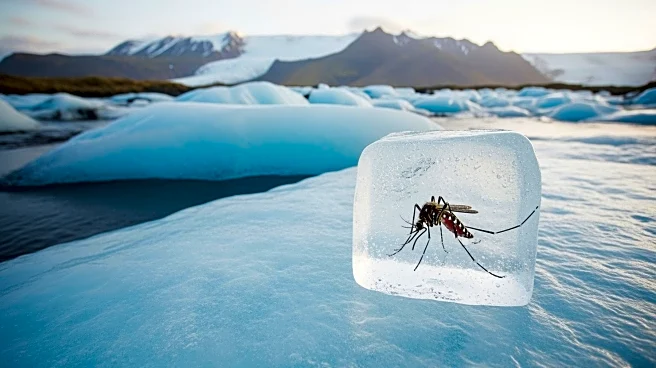What's Happening?
Researchers at Trinity College Dublin have identified a 'universal thermal performance curve' (UTPC) that applies to all living species on Earth. This curve describes how organisms respond to temperature
changes, revealing a consistent pattern across diverse species. The UTPC suggests that evolution is constrained by temperature, as no species can escape its influence on biological performance. The study, published in the journal PNAS, shows that performance increases with temperature until reaching an optimum point, beyond which it declines sharply. This discovery indicates that species may face greater limits in adapting to climate change, as warming temperatures could reduce the viable performance window for many organisms.
Why It's Important?
The discovery of the UTPC has significant implications for understanding how species adapt to climate change. As global temperatures rise, the performance of many organisms may be compromised, potentially leading to physiological breakdown or death. This research highlights the constraints on evolutionary adaptation, suggesting that species may struggle to cope with rapid environmental changes. The findings could influence conservation strategies and inform policies aimed at mitigating the impacts of climate change on biodiversity. Understanding the thermal limits of species is crucial for predicting their survival and resilience in a warming world.
What's Next?
Researchers plan to use the UTPC model as a benchmark to identify species or systems that may deviate from this pattern. Discovering exceptions could provide insights into how certain organisms manage to adapt to changing temperatures. This research is particularly relevant given forecasts of continued global warming, which may challenge the survival of many species. Further studies could explore the mechanisms that allow some species to break away from the UTPC, potentially offering strategies for enhancing resilience in vulnerable populations.
Beyond the Headlines
The UTPC underscores the interconnectedness of life and the universal constraints imposed by temperature. This discovery may prompt a reevaluation of how we understand evolutionary processes and the limits of adaptation. The research could also inspire new approaches to studying biodiversity and ecosystem dynamics, emphasizing the need for interdisciplinary collaboration in addressing climate-related challenges.











